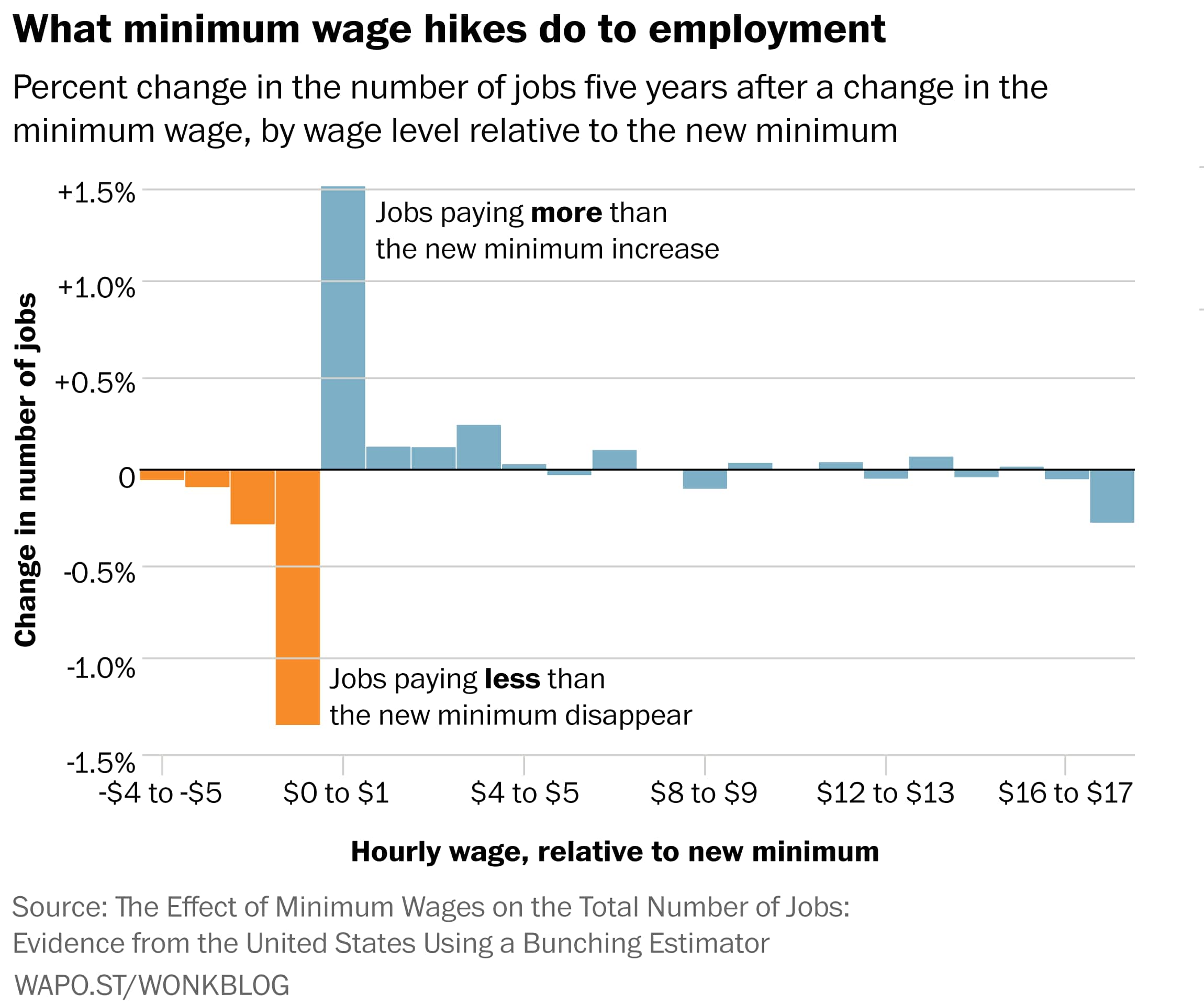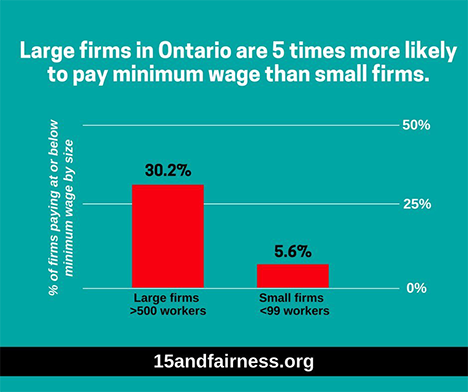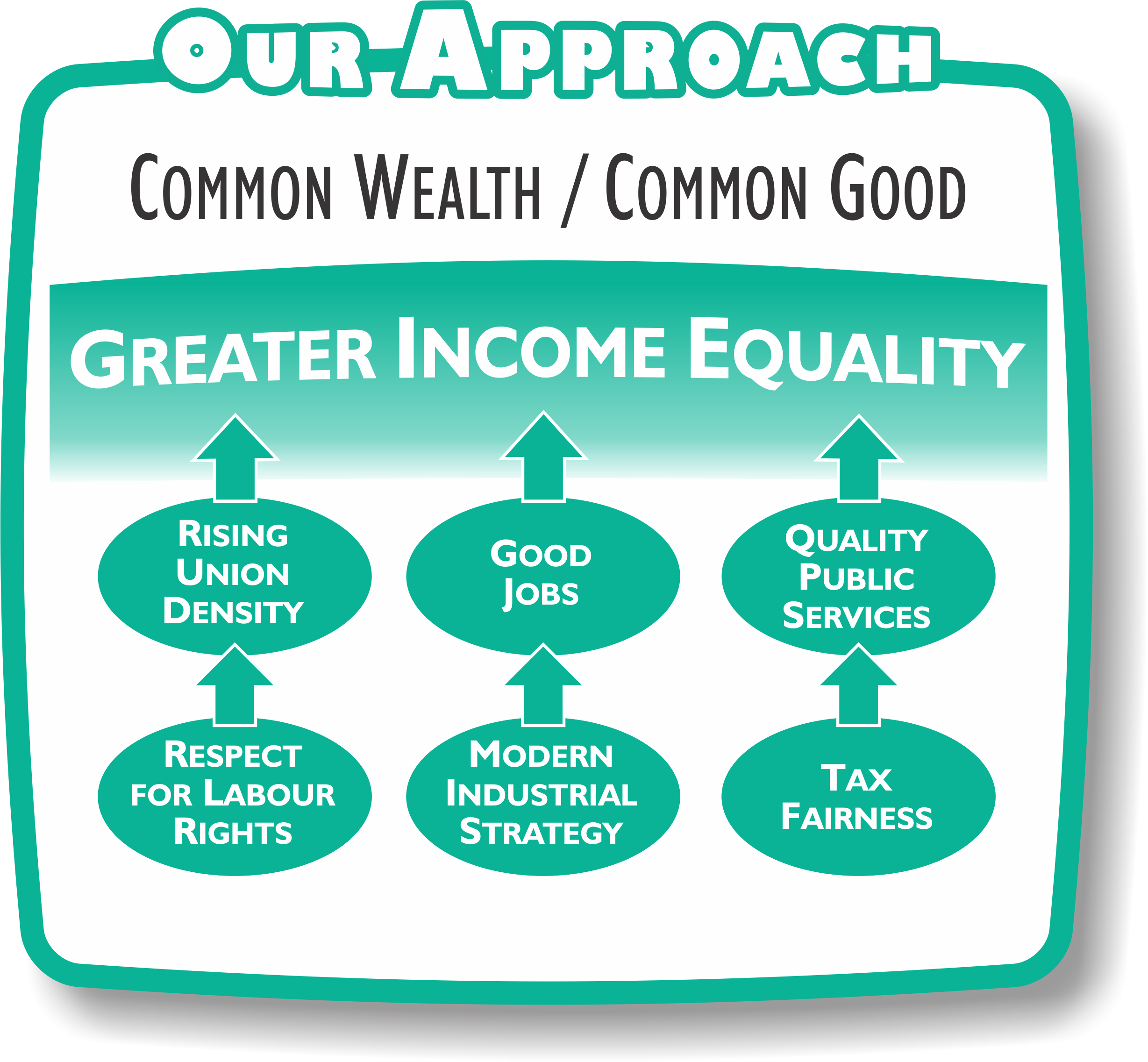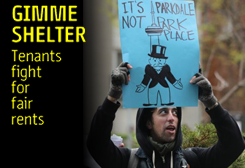ALL TO THE GOOD
A $15 minimum wage is good for us all—even business

PAYING PEOPLE BETTER WORKS. We all know this. We have eyes and brains. We can see the way things really are. We can see Ontario and Alberta are still there, doing just fine—better than fine. We can see Toronto, Calgary and Seattle haven’t turned into ghost towns. We don’t need to be economists to see what is obvious: namely, that deciding to raise the minimum wage to $15 per hour hasn’t hurt any of them.
This is contrary to everything we get told 24/7. The big business, political and media elites keep telling us a $15 an hour minimum wage will crash our economies. The truth is the exact reverse.
Lots of jobs
Job growth in Ontario and Alberta is at an all time high. Employers in these two provinces are not worried about having to soon pay no less than $15 an hour to every worker they have.
The Canadian Federation of Independent Business (CFIB) is no friend of everyday working people. In fact, it leads the fight against a $15 an hour minimum wage. And yet, their own survey of their members revealed confidence among small business owners in Alberta rose faster in December 2017 than in any other province.
In the third quarter of 2017, there were 33,900 unfilled jobs in Alberta, according to the CFIB Help Wanted Report.
In Ontario there are 149,000 job openings.
137 minimum wage hikes create jobs

NET GAIN: University study finds jobs paying more outstrip jobs lost to minimum wage rise.
Sharlene Massie is the owner of an Alberta recruitment firm. She says her business jumped up 100% between October 2016 and October 2017. Things got so busy her company had to hire two new people.
Massie says the rise in job openings is being driven mostly by small and medium-sized businesses hiring again.
Businesses large and small always howl at the merest suggestion that they should pay their workers more. They did it over 150 years ago when laws were first proposed to stop sending seven year-olds down to work in coal mines or to put an end to the 16-hour workday. They are doing it still. Despite the fact that their predictions of economic calamity fly in the face of daily reality in countries with the world’s strongest economies and social well being.
For example, there is no legislated minimum wage in Sweden, Finland, Norway, Denmark, Switzerland, Iceland and Italy.
The reason? Collective bargaining covers all workers, and minimum pay in these collective agreements is most commonly between 60 and 70 per cent of their average wage rates—which are much higher than the Canadian average. ($15 per hour is about 55% of the average hourly wage in Canada.)
Still think $15 is too rich? The negotiated minimum in Denmark is the equivalent of C$22.50. The legislated minimum in Australia is C$17.70.
There are more of us than you think
Far more people work for the minimum wage than most of us imagine. It’s far more than teenagers working after school jobs. It’s far too many depending on a minimum wage job to put a roof over their head and feed a family.

Statistics Canada’s 2015 Labour Force Survey shows that less than one-third of all minimum wage workers in Canada are between 15-19. The same data identified hundreds of thousands of minimum wage workers (41%) who are 25 or older.
Canada has been running a low-wage economy for decades, relatively speaking, according to Statistics Canada. In fact, at last count Canada outpaced the U.S. in the reliance on low-wage work. Within Canada, Ontario has the highest reliance on low-wage work.
At least half of all minimum wage workers in Ontario work for employers with over 500 employees? That’s a growing trend. The same is true in most other provinces.
We all cash in
Domestic consumption drives the economy, in Canada and around the world. Household purchases account for 57 per cent of Canadian GDP. So boost the minimum wage and you boost the economy from the bottom up.
When lower income households see a sustained rise in incomes, they spend virtually all of it. Most goes to food (more nutritious food or eating out), better health care and more education. Sometimes it also goes to rent (moving to a better neighbourhood). Almost all of this spending stays in the local economy.
Furthermore, higher minimum wages improve not just the top line, but the bottom line of business. Exhibit A: Walmart, which in the summer of 2016 reported higher than expected profits, partly due—according to the company—to paying its workers higher wages.
A 2011 University of California, Berkeley study estimated raising the minimum wage by approximately $5 would only lead to a 1.1% increase in the average Walmart shopper’s bill at the checkout line (about 46 cents)—an amount well below what Walmart said their average shopper saves.
Between 2013 and 2014, 13 states in the USA increased the minimum wage. The majority of these states saw above-average job growth.
The point is, even where there are job losses, other opportunities open up, and there is more purchasing power to spur demand.
Success in Seattle
Alberta isn’t the only place proving that a higher minimum wage works.
The minimum wage in Seattle will reach $15 this year.
In April 2017, two years after the minimum wage increases began, joblessness in Seattle stood at 2.6 percent, the lowest rate for nine years. More proof that minimum wage laws do not kill jobs.
A 2016 study by researchers at the University of Washington which looked at the effects of higher minimum wages in Seattle concluded:“We do not find compelling evidence that the minimum wage has caused significant increases in business failure rates.
“Moreover, if there has been any increase in business closings caused by the Minimum Wage Ordinance, it has been more than offset by an increase in business openings.”
The Berkeley study also challenged the misguided assumption that a minimum wage hike is automatically bad for business. It pointed out that increased labour costs can be offset, such as through a reduction in worker turnover due to increased worker satisfaction, cuts to profits, and increased prices for goods and services. This is backed up by the results of other studies which have found that a 10 percent increase in the minimum wage resulted in a mere 1-2 percent rise in restaurants’ operating costs.
Studies into three jurisdictions in the USA that introduced local minimum wage laws, including San Francisco, California, found “no statistically significant negative effects on employment or hours.”
- 30 -












Add new comment